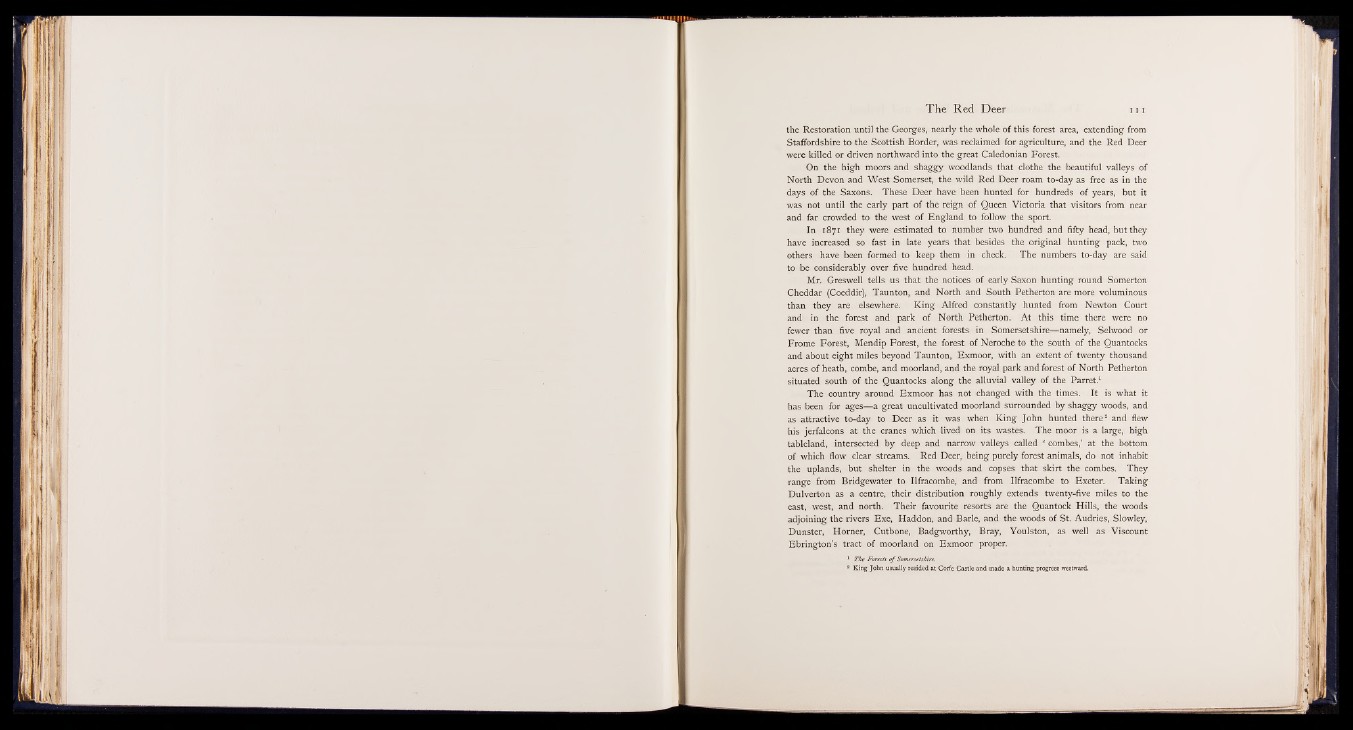
the Restoration until the Georges, nearly the whole of this forest area, extending from
Staffordshire to the Scottish Border, was reclaimed for agriculture, and the Red Deer
were killed or driven northward into the great Caledonian Forest.
On the high moors and shaggy woodlands that clothe the beautiful valleys of
North Devon and West Somerset, the wild Red Deer roam to-day as free as in the
days of the Saxons. These Deer have been hunted for hundreds of years, but it
was not until the early part of the reign of Queen Victoria that visitors from near
and far crowded to the west of England to follow the sport.
In 1871 they were estimated to number two hundred and fifty head, but they
have increased so fast in late years that besides the original hunting pack, two
others have been formed to keep them in check. The numbers to-day are said
to be considerably over five hundred head.
Mr. Greswell tells us that the notices of early Saxon hunting round Somerton
Cheddar (Coeddir), Taunton, and North and South Petherton are more voluminous
than they are elsewhere. King Alfred constantly hunted from Newton Court
and in the forest and park of North Petherton. At this time there were no
fewer than five royal and ancient forests in Somersetshire— namely, Selwood or
Frome Forest, Mendip Forest, the forest of Neroche to the south of the Quantocks
and about eight miles beyond Taunton, Exmoor, with an extent of twenty thousand
acres of heath, combe, and moorland, and the royal park and forest of North Petherton
situated south of the Quantocks along the alluvial valley of the Parret.1
The country around Exmoor has not changed with the times. It is what it
has been for ages— a great uncultivated moorland surrounded by shaggy woods, and
as attractive to-day to Deer as it was when King John hunted there2 and flew
his jerfalcons at the cranes which lived on its wastes. The moor is a large, high
tableland, intersected by deep and narrow valleys called ‘ combes,’ at the bottom
of which flow clear streams. Red Deer, being purely forest animals, do not inhabit
the uplands, but shelter in the woods and copses that skirt the combes. They
range from Bridgewater to Ilfracombe, and from Ilfracombe to Exeter. Taking
Dulverton as a centre, their distribution roughly extends twenty-five miles to the
east, west, and north. Their favourite resorts are the Quantock Hills, the woods
adjoining the rivers Exe, Haddon, and Barle, and the woods of St. Audries, Slowley,
Dunster, Horner, Cutbone, Badgworthy, Bray, Youlston, as well as Viscount
Ebrington’s tract of moorland on Exmoor proper.
1 The Forests o f Somersetshire.
s King John usually resided at Corfe Castle and made a hunting progress westward.